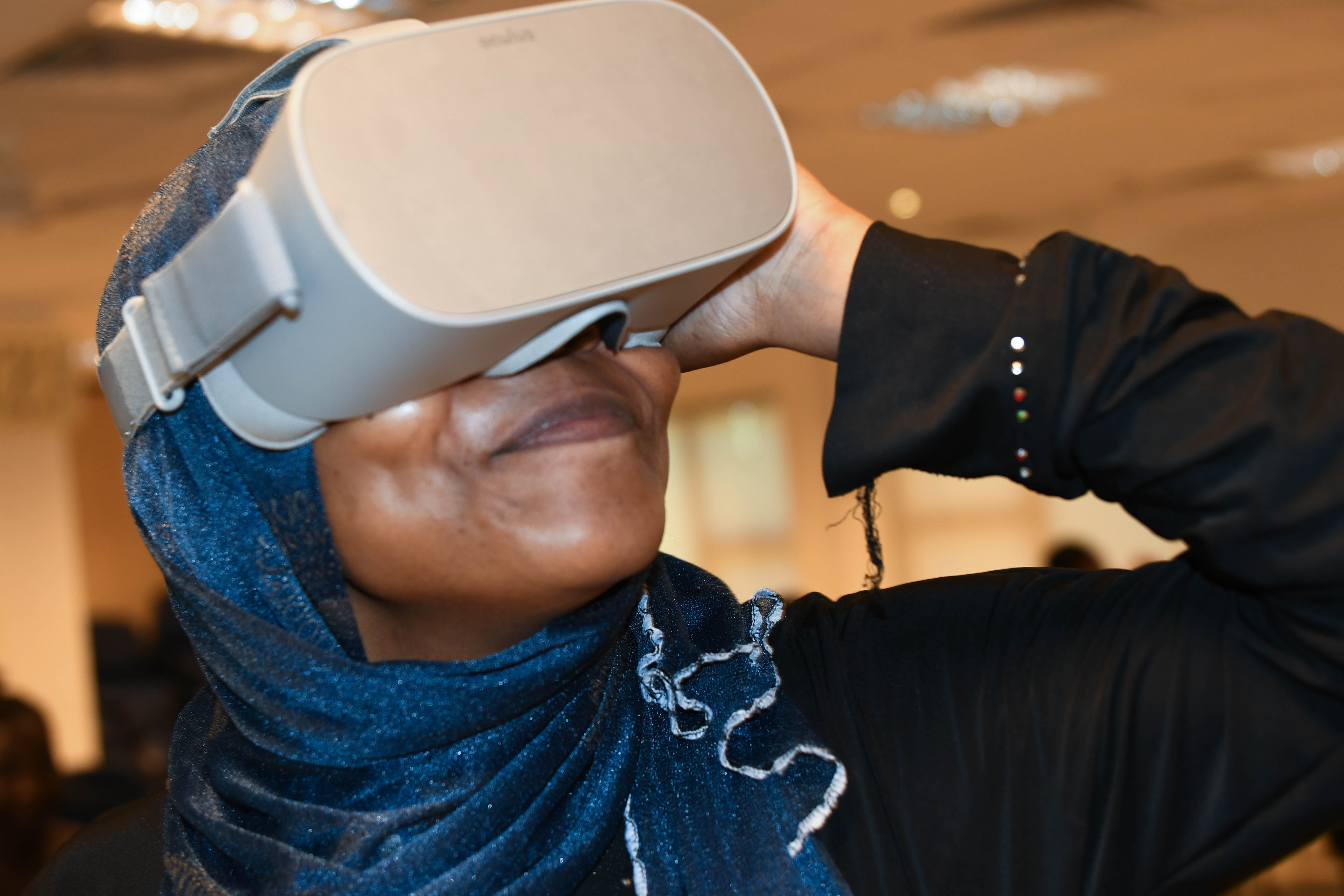News
Taking the Lab to the village using Virtual Reality (VR)
February 12, 2020
Two IDeAL fellows, Dr. Sophie Uyoga and Dr. Patience Kiyuka are part of thirteen African scientists that received funding to implement innovative community and public engagement projects from the African Academy of Science.
“Growing up seeing a fully operational lab was just but a dream. I want to make it a reality for others! Through the AAS Public Engagement Fund, I will develop a fully operational lab using Virtual Reality for students,” remarks Patience Kiyuka.
Patience is developing a VR project aiming to explore the use of virtual reality as a public engagement tool for young children. Her project aims to develop a VR video of the KEMRI-Wellcome Trust Research Programme, Immunology laboratories to expose children to research and science in general.
She shared her experience with us.

Please tell us about yourself?
Patience: I just completed my PhD studies. My PhD work revolved around understanding how the malaria parasite can establish infection despite being susceptible to attack from the immune system, specifically the complement system. My research interests are on immunology and epidemiology of infectious diseases. Why virtual reality?
Why Virtual Reality?
Patience: While I was on my collaborative study in Finland as part of my PhD studies, I met an MSc student over a science retreat meeting. During our conversation, she mentioned how she was using virtual reality to teach science to young people. After that chat, I started researching on the various applications of virtual reality.
You won an African Academy of Science (AAS) grant to undertake your VR project, what does this mean to you?
Patience: The CPE grant I won is going to pioneer the use of virtual reality as a public engagement tool in a rural African setting.
I was lucky to go to good schools but I know girls growing up in the village may never know what research is all about. I want as many girls as possible to get exposure to a research environment, and VR promises to offer that platform. I am offering to bridge the gap by allowing children to immerse in a laboratory research environment. We hope that through the experience, we will get more children to consider career options in science. More importantly, have them appreciate the role of science in society.
I am very excited about this project. I hope we will be able to produce proof of concept that VR can be used for science communication.
What motivated you to apply?
Patience: At first, when I saw the call from AAS, I didn’t think that they would fund such an idea. Later, I mentioned the possibility of testing the use of VR for public engagement to my mentor, Dr. Sam Kinyanjui. He was very receptive and believed that it was a great idea. It is through his support and encouragement that I was motivated to put in the application finally.

What is exceptional about the VR idea?
Patience: VR has been touted as the next frontier in science communication. It allows users to immerse themselves in a simulated virtual world or real-world experience. It can be very interactive, therefore allowing scientists to explain even abstract concepts to the lay public. It has been shown that there is better retention of concepts when VR is used as an educational tool for science subjects.
- 51
- 66
- 48
- 104
- 44
- 423


Share: